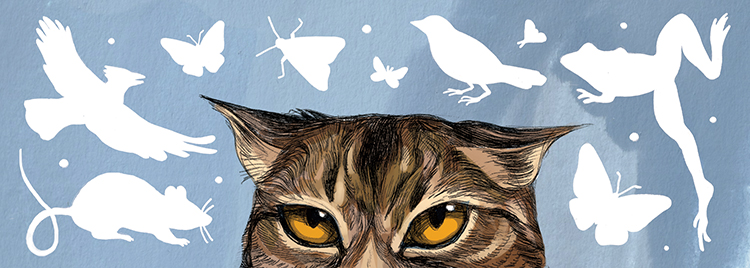 story by Bernard Brown | photo by Nick ScobelOut for a herping expedition along Cobbs Creek with a group of children from West Philadelphia’s Lea School, I was hoping for snakes. After all, snakes are the most glamorous, gross-out find from a grade-school perspective, and I wanted to look like the expert “snake man” Dr. Vivienne—co-guide and community volunteer—had promised the kids. Unfortunately, the weather was not cooperating. The sky was cloudy, the air damp and chilly. The snakes were sensibly sleeping underground, holding out for the sun. All we found was salamanders.
story by Bernard Brown | photo by Nick ScobelOut for a herping expedition along Cobbs Creek with a group of children from West Philadelphia’s Lea School, I was hoping for snakes. After all, snakes are the most glamorous, gross-out find from a grade-school perspective, and I wanted to look like the expert “snake man” Dr. Vivienne—co-guide and community volunteer—had promised the kids. Unfortunately, the weather was not cooperating. The sky was cloudy, the air damp and chilly. The snakes were sensibly sleeping underground, holding out for the sun. All we found was salamanders.
My mind distracted by perceived failure, it took me a few minutes to notice the excited “oohs” and “ahs.” Never mind snakes—rolling logs to find the cute, glimmering red-backed salamanders was awesome enough.
I swear they’re cute. A little slimy? Sure. Bug-eating, nocturnal creepy crawlies that live in the moist spaces under rocks and logs? Also true. But then there’s those big black eyes and the cartoonishly round faces. And they sparkle, literally, with itty bitty silver speckles sprinkled all over their red-brown backs and grey flanks. About half of them are solid gray under all that glitter, the ‘lead’ backs.
If you had enough of the searing weather this summer, the city’s several million red-backed salamanders agreed with you. They generally retreat to cooler strata while we sweat it out on the surface, and then come back up to the forest floor from fall through spring.
As the leaves turn and crisp air takes back the night, the red-backs are packing on the milligrams (adults are three to four inches long) and getting ready for a season of romance and excitement. Of course salamander romance looks pretty alien to us—biting and chin rubbing followed by an undulating dance in which the male places a little packet of sperm on the ground for the female to pick up as she grooves on behind him.
Almost every rock and log in the woods hides a salamander sleeping off the night’s mayhem, but you can also find them in back yards and gardens (the shadier the better). My wife and I once found one on a chilly November day under a rock at the base of the Art Museum, right next to the multi-use trail.
Be gentle with the little guys. Our hands are warm enough to give them heat stroke after few minutes, and their skin (which they use to exchange CO2 for oxygen; they have no lungs) absorbs the chemicals in bug spray or lotions. Always put the home rock or log back down and then let the salamander go; it’ll find its way back underneath and avoid a tragic smooshing.



